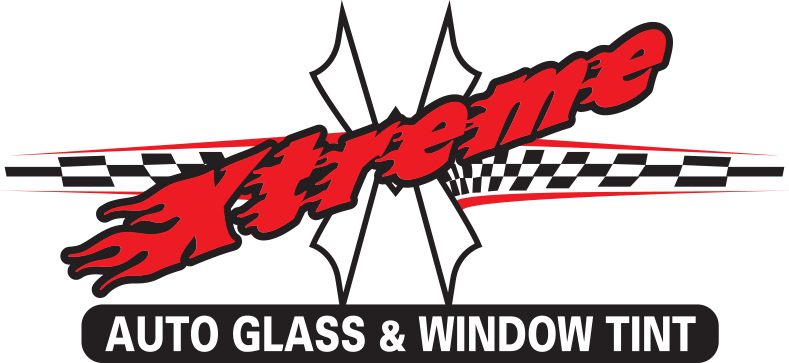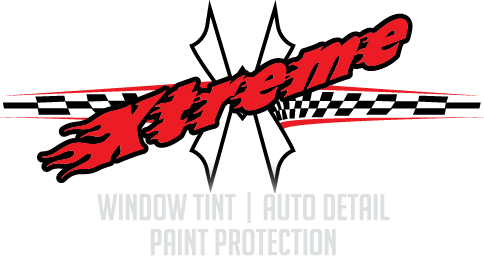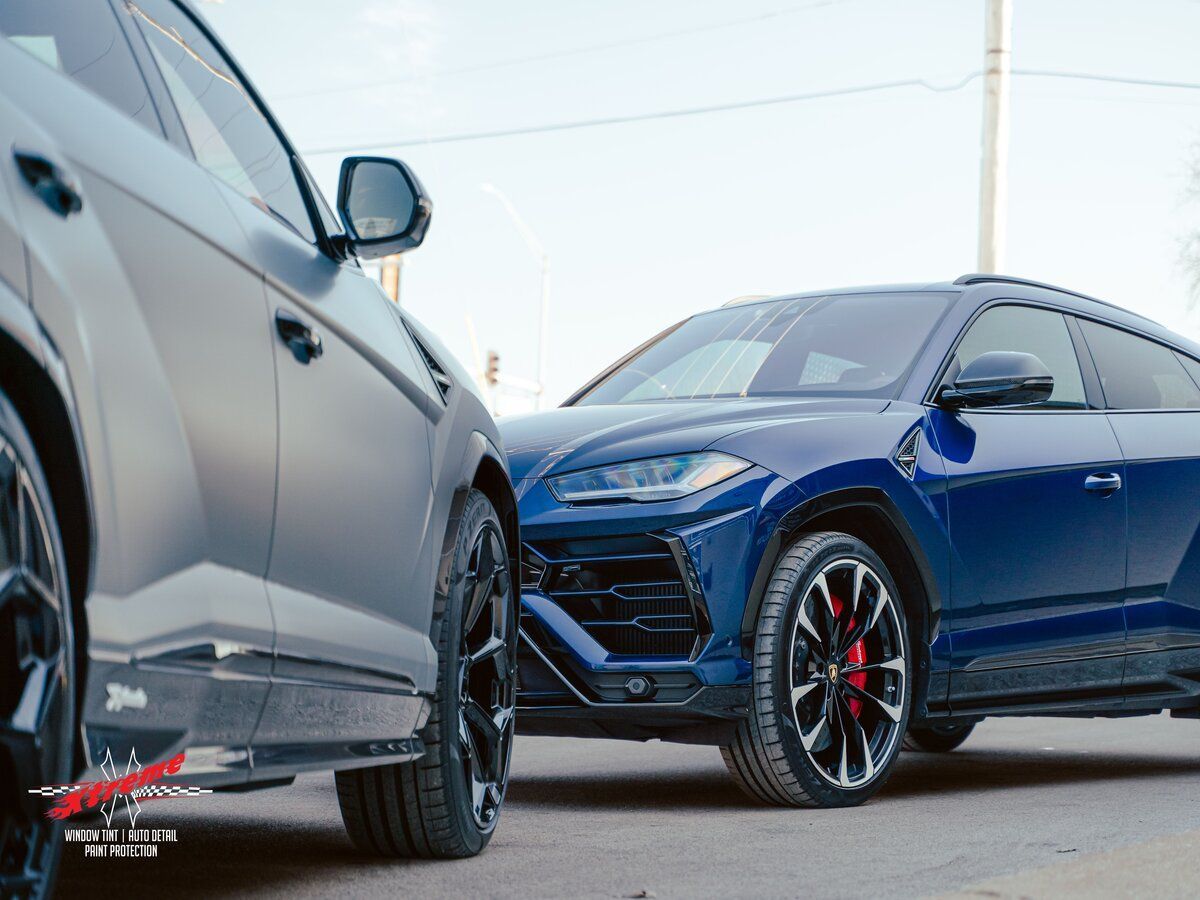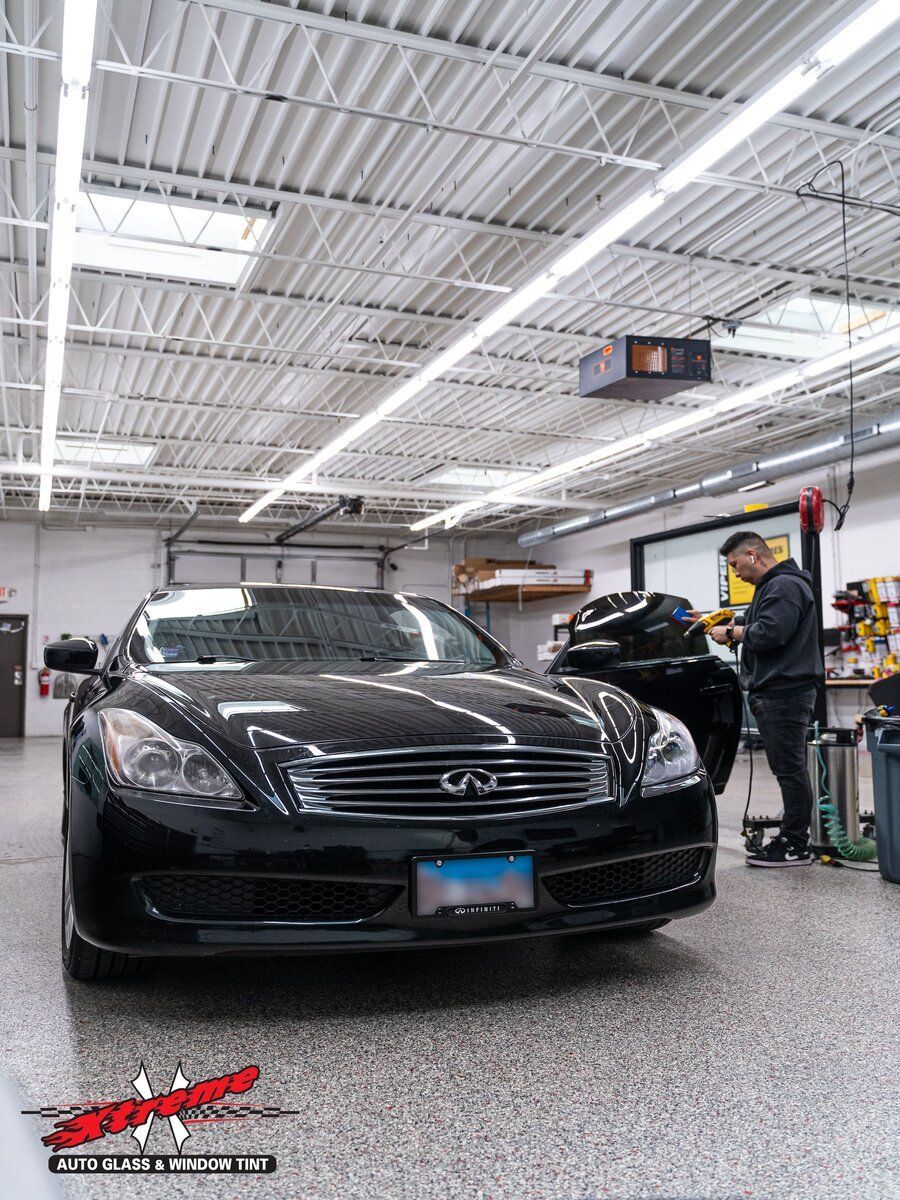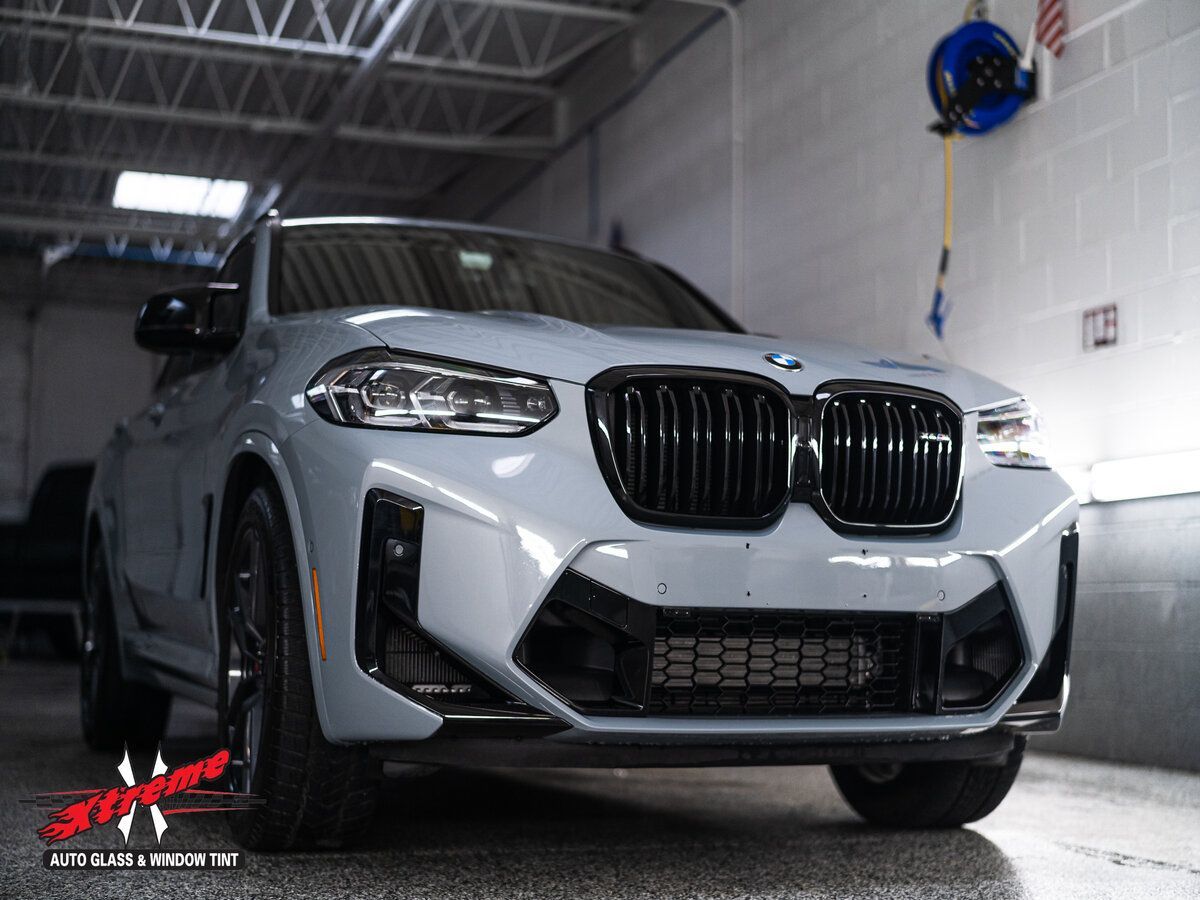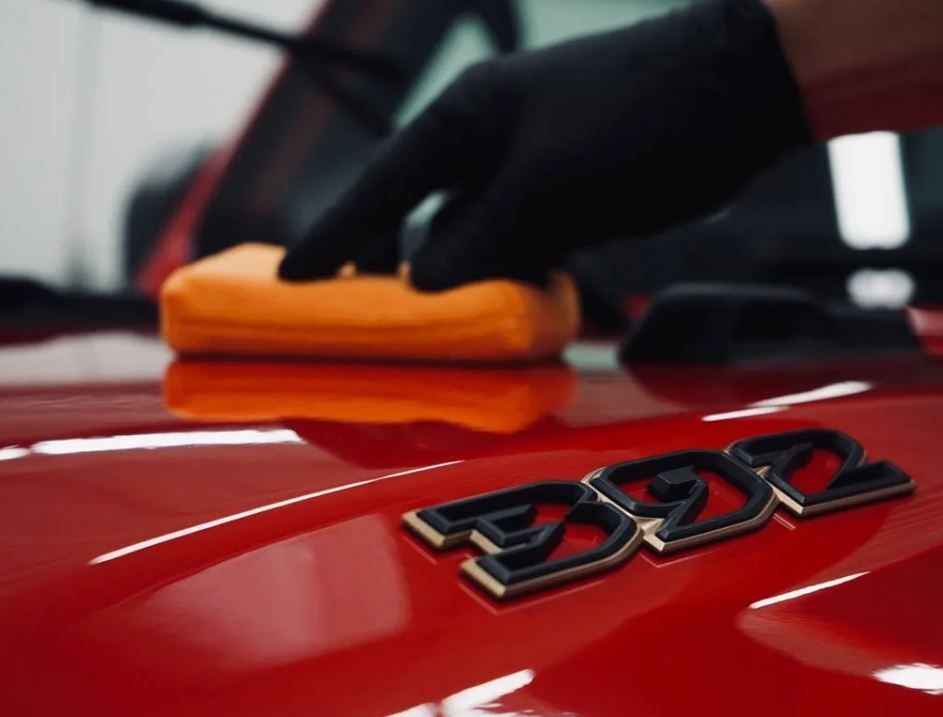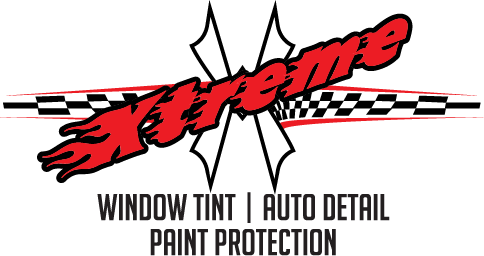When it comes to keeping your car looking sharp, many of us worry about the inevitable scratches and scuffs that come with daily driving. You know the feeling—you're parked in a busy Elmhurst lot or cruising down I-355, and suddenly, there's that dreaded sound of a stone chip or a runaway shopping cart bumping against your paint job. It's stressful and frustrating! But what if there was a way to protect your vehicle that not only shields it from blemishes but also has the remarkable ability to heal itself? Enter self-healing paint protection film (PPF)—a game-changer in automotive care that combines cutting-edge technology with practical protection. At Xtreme Window Tint and Glass in Addison, we work with premium Llumar Paint Protection Films that bring this innovation to vehicles throughout the Chicago suburbs. Let's dive into this fascinating technology and discover how it can keep your ride looking showroom-fresh.

What is Self-Healing PPF?
Self-healing Paint Protection Film (PPF) is more than just a layer of defense for your vehicle's paintwork—it's a stunning fusion of science and practicality. This advanced product uses thermoplastic polyurethane (TPU), known for its flexibility and optical clarity, making it ideal protection against scratches and dings. When exposed to heat from sunlight or even the warmth of your vehicle's surface, the film springs into action, repairing itself from minor blemishes and preserving your car's sleek appearance. Imagine navigating a gravel parking lot in Schaumburg or dealing with winter road debris in Wheaton. The anxiety of a chipped paint job can be nerve-wracking for any car owner. That's where self-healing PPF shines—it actively combats daily wear while helping you maintain your car in near-showroom condition.
The Science Behind the Magic
At the core of self-healing PPF lies thermoplastic polyurethane (TPU), a material renowned for its unique properties. TPU combines characteristics of both rubber and traditional plastic while maintaining elasticity and flexibility, which gives it resilience. This means that not only does it protect your vehicle, but it also has the inherent ability to restore itself after minor damage.
When TPU experiences scratches or indentations from everyday hazards like gravel or road debris, applying heat—whether from sunlight or a hair dryer—rearranges its polymer chains. These chains flow back into their original position, effectively filling in those tiny imperfections. The result? The film returns to its smooth, flawless state. This process occurs at relatively low temperatures. Minor scratches often disappear under temperatures as low as 140°F (60°C). Imagine being able to restore your car's surface simply by parking in the sun or using warm air. Studies have demonstrated that this mechanism significantly reduces visible damage—by as much as 80%—compared to conventional paint finishes.
For example, one of our clients at Xtreme had a near-perfect glossy black hood—until a small rock struck during a road trip and left a faint mark. Instead of panicking about a full repaint, he simply parked in the sun for an afternoon. The scratch vanished, and his hood looked flawless again. This ability proves invaluable, especially for drivers in the Chicago suburbs, where we frequently encounter road debris, harsh winters, and challenging weather conditions.
Composition Breakdown
To truly appreciate how PPF accomplishes this feat, it's important to understand its multi-layered structure. Think of self-healing PPF as a protective sandwich with three key layers. The top layer, known as the clear coat, is designed specifically for healing. This is the layer that makes those little scratches disappear when heat is applied. Beneath the clear coat is the middle layer, which acts as an impact absorber. This layer cushions the vehicle from stone chips and abrasions suffered in tight parking situations. Finally, the adhesive base firmly attaches the film to the vehicle without compromising your vehicle’s factory finish. When you consider the function of each layer, it becomes clear how versatile and effective self-healing PPF is in protecting against various hazards.
Major Benefits for Vehicle Protection
Self-healing PPF truly transforms how we approach automotive care. Here is why so many of our clients in Addison, Glendale Heights, and surrounding areas choose this protection.
Scratch Resistance That Works
Imagine cruising through a Carol Stream parking lot, knowing that every minor scratch from debris or an errant shopping cart is less likely to mar your vehicle's finish. The PPF TPU composition allows it to absorb and dissipate impact, making those pesky scratches fade away with just a touch of warmth from the sun. Not only does this technology protect the surface, but it also maintains your vehicle's aesthetic appeal. Since the film is transparent, it will not interfere with your car's original paint finish—in fact, it often enhances the shine. Think of it as a clear shield that showcases your vehicle’s beauty while safeguarding it against the elements.
UV Protection for Illinois Summers
High-quality PPF includes UV inhibitors that work tirelessly to prevent your paint from fading under the relentless sun. For residents across the Chicago suburbs—especially in areas like Oakbrook and Glen Ellyn, where summers can cause significant sun damage and winters are harsh—this added layer creates peace of mind and preserves that showroom shine year-round.
Hydrophobic Properties = Easy Cleaning
Newer films feature hydrophobic properties that make cleaning a breeze. Water beads off the surface, allowing grime, dirt, and even bird droppings to slide right off without much effort. Gone are the days of scrubbing endlessly to remove stubborn stains—self-healing PPF gives you back your precious time. Regular washing with just water becomes efficient as dirt will not cling stubbornly to your car exterior.
Preserve Your Investment
One of the most compelling reasons to invest in self-healing PPF is its ability to extend your vehicle's lifespan significantly. By maintaining your car's factory finish for longer periods, you not only preserve its appearance but also elevate its resale value. Studies show cars with PPF retain up to 15% more value compared to those without. That is not just an investment in protection—it is a smart financial decision.
Professional Installation Makes the Difference
While some may consider DIY installation, professional application is crucial for maximizing the life and effectiveness of your self-healing PPF. At Xtreme Window Tint and Glass, our certified installers follow a meticulous process to ensure the PPF adheres perfectly to your vehicle, ensuring optimal protection.
Step 1: Preparation
We start by thoroughly washing your vehicle to remove any wax, grease, or dust that could affect adhesion. This step ensures that the film bonds perfectly to the surface without interference.
Step 2: Precise Application
Our technicians carefully align the PPF on your vehicle's surface, working methodically to minimize air bubbles. Using professional-grade squeegees, we apply pressure from the center outward to eliminate any trapped air and create a solid bond.
Step 3: Seamless Finishing
We trim excess film for a flawless fit, ensuring clean edges that blend seamlessly with your vehicle design. Our experience and specialized tools guarantee optimal protection without risk.
The Installation Process
Applying PPF is a detailed process that requires precision and expertise. Professional installers approach the process much like tailoring a custom suit, ensuring the film fits perfectly around each curve and contour of your car.
First, the surface is carefully prepared. This step involves thorough cleaning with pH-neutral solutions to remove dirt, grease, and contaminants. Any imperfection left on the paint can compromise the film’s adhesion.
Next, the film is applied in sections using a slip solution that allows careful adjustment before the adhesive sets. Each section must align perfectly to avoid wrinkles, bubbles, or visible seams.
Edge sealing is one of the most critical steps. Properly sealed edges prevent moisture intrusion, peeling, and premature lifting of the film. Once installed, the PPF undergoes a curing period of 24 to 48 hours, during which it bonds securely to the paint surface.
Professional installation is key. Attempting a DIY application often leads to poor results, wasted material, and the need for reinstallation. Choosing certified installers ensures maximum durability and a flawless finish.
The Financial Value of PPF
Although PPF represents an upfront investment, its long-term financial benefits are significant. Repairing paint damage from chips, scratches, or corrosion often costs hundreds or even thousands of dollars per panel. By comparison, PPF prevents these issues before they occur.
Partial coverage, which includes high-impact areas like the hood, bumper, and mirrors, typically ranges from $600 to $1,200. Full front coverage may cost $1,200 to $2,000, while full-vehicle protection ranges from $2,500 to $7,000 or more depending on size and complexity.
When weighed against the expense of paint correction, touch-ups, or full repaints, the investment becomes clear. In addition, vehicles protected with PPF maintain higher resale values. Buyers are more willing to pay a premium for cars with flawless exteriors, which can boost resale value by thousands of dollars.
PPF Compared with Ceramic Coating and Window Tint
While PPF provides unmatched physical protection, it works even better when paired with complementary services such as ceramic coating and window tint.
Ceramic coating enhances hydrophobic properties and adds an additional layer of protection against UV rays, dirt, and chemical stains. Applied over PPF, it makes maintenance even easier by allowing water and debris to slide off effortlessly.
Window tint, meanwhile, improves comfort and safety inside your vehicle. It blocks harmful UV rays, reduces glare, and helps regulate cabin temperature during hot Illinois summers. High-quality tints also enhance privacy and add to the overall sleek look of your car.
Together, these services create a comprehensive shield against both interior and exterior threats, ensuring your car remains in top condition year after year.
Why Illinois Drivers Benefit Most from PPF
Driving conditions in Illinois make PPF especially valuable. Winters bring heavy use of road salt, which accelerates rust and corrosion. Summers can be equally harsh, with high UV exposure and storms that deposit tree sap, pollen, and acid rain on vehicles.
Urban congestion in places like Schaumburg and Elmhurst increases exposure to brake dust, industrial pollutants, and construction debris. Suburban parking in Glen Ellyn or Wheaton often means exposure to bird droppings, tree sap, or falling branches.
These local conditions highlight why PPF isn’t just an upgrade—it’s a smart defense strategy for protecting your investment in a challenging driving environment.
Protect Your Investment Today
Paint Protection Film provides more than just cosmetic enhancement. It offers lasting defense against environmental fallout, pollutants, debris, and the harsh driving conditions Illinois drivers face every day. By reducing long-term repair costs and maintaining your car’s resale value, PPF is an investment that pays for itself over time.
At Xtreme Window Tint and Glass, we’ve been protecting vehicles in the Addison area since 2007. Our certified installers use premium Llumar PPF to ensure the highest level of protection and durability. Whether you’re commuting through Schaumburg, parking under trees in Glen Ellyn, or braving winter roads in Oakbrook, we’ll help your vehicle stay showroom fresh.
Ready to protect your car from the elements? Call us today at (630) 626-5125 or visit our Addison location for a free consultation and quote. Discover why so many Chicagoland drivers trust us to keep their vehicles protected, polished, and looking their best.
